Performance - Feature tests
X800 XT vs 6800 Ultra
To check the output of the feature tests, I'll show results from just the X800 XT and 6800 Ultra to save time and give a nice point of comparison. In terms of potential raw fillrate and vertex shader performance, both cards are similar. Both have sixteen pixel pipes with a single texture sampler each, and both have six vertex shader units. The difference in basic theoretical performance lies in the core and memory clocks of each. 500/1000 on the XT vs 400/1100 on the Ultra.That gives some 6400Mtexels/sec of bilinear filtered, multi-texturing fillrate for the Ultra and 8000Mtexels/sec for the ATI board. Let's see if 3DMark05's multi-texture fillrate test shows that to be correct, and if it is and the results are close to their theoretical peak, a simple measure of efficiency.
Multi-texturing fillrate
Let's see the numbers.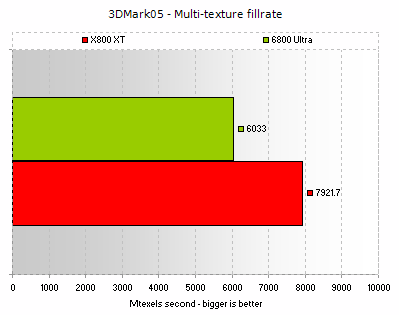
Given the theoretical numbers I outlined above, it seems as though 3DMark05's multi-texture fillrate test is spot on with its assessment and the hardware is reaching very close to its peak fillrate in both cases. Let's see just how close.
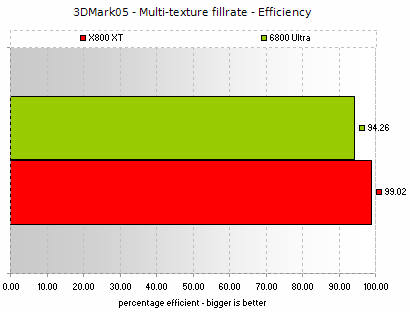
Nearly 100% efficient from the Radeon, 95% or so from the GeForce. The results are similar on the rest of the boards on test, the tool measuring multi-texture fillrate well.
Vertex Tests
With 25% more core clock than the 6800 Ultra, the X800 XT has theoretically 25% more vertex shader power than the 6800 Ultra, assuming the vertex units are broadly similar in their functionality and capabilities running the same DX9 HLSL vertex shader code. 3DMark05 provides two tests to check if that's correct. The first renders four of the monsters you see in Game Test 3 using vertex programs.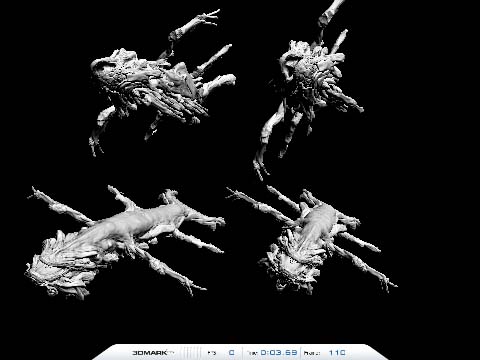
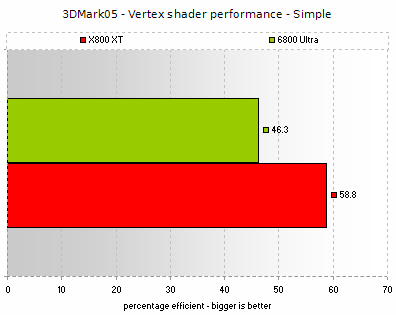
The X800 XT is ~27% faster in the simple vertex test, highlighting its clock speed advantage. The second test uses vertex programs to draw a rotating patch of grass, with the blades moving as though it were windy.
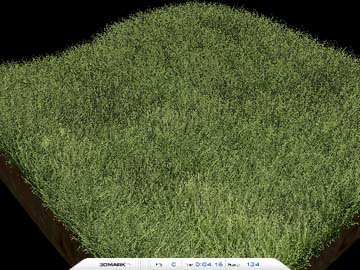
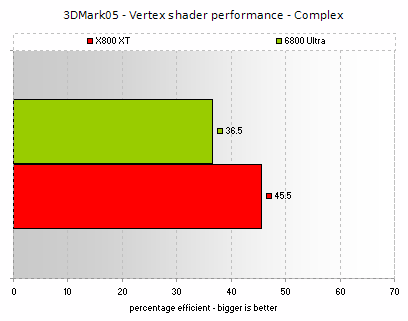
25% faster than the 6800 Ultra, the X800 XT shows off its clock advantage just about perfectly in 3DMark05's vertex tests.









